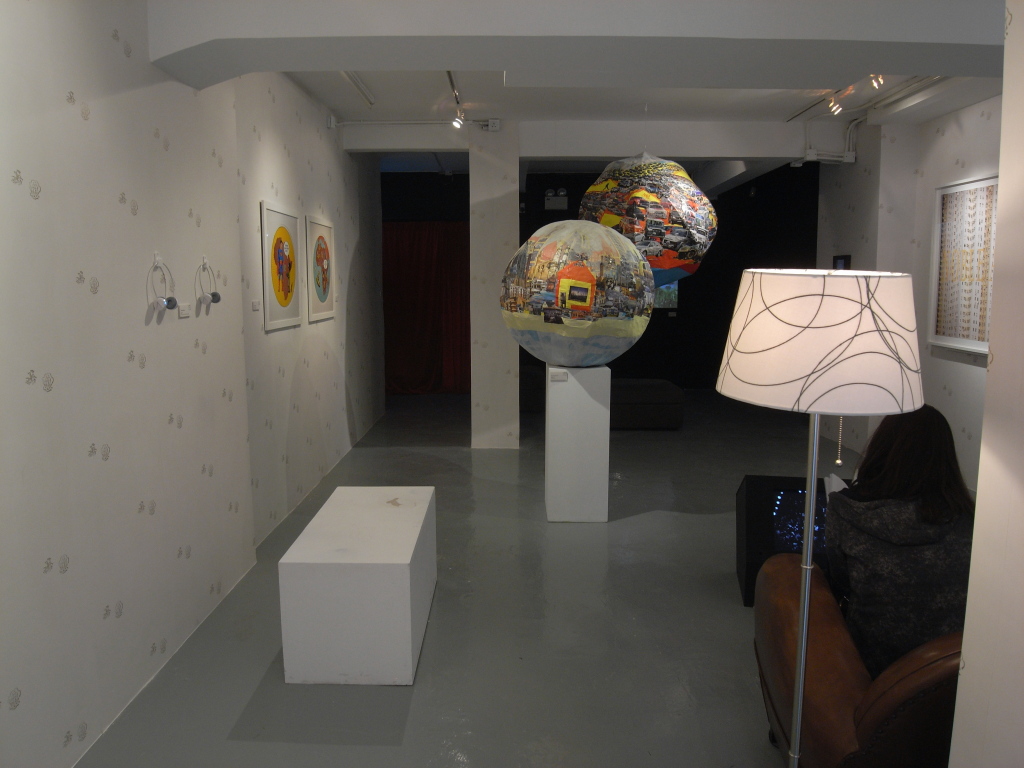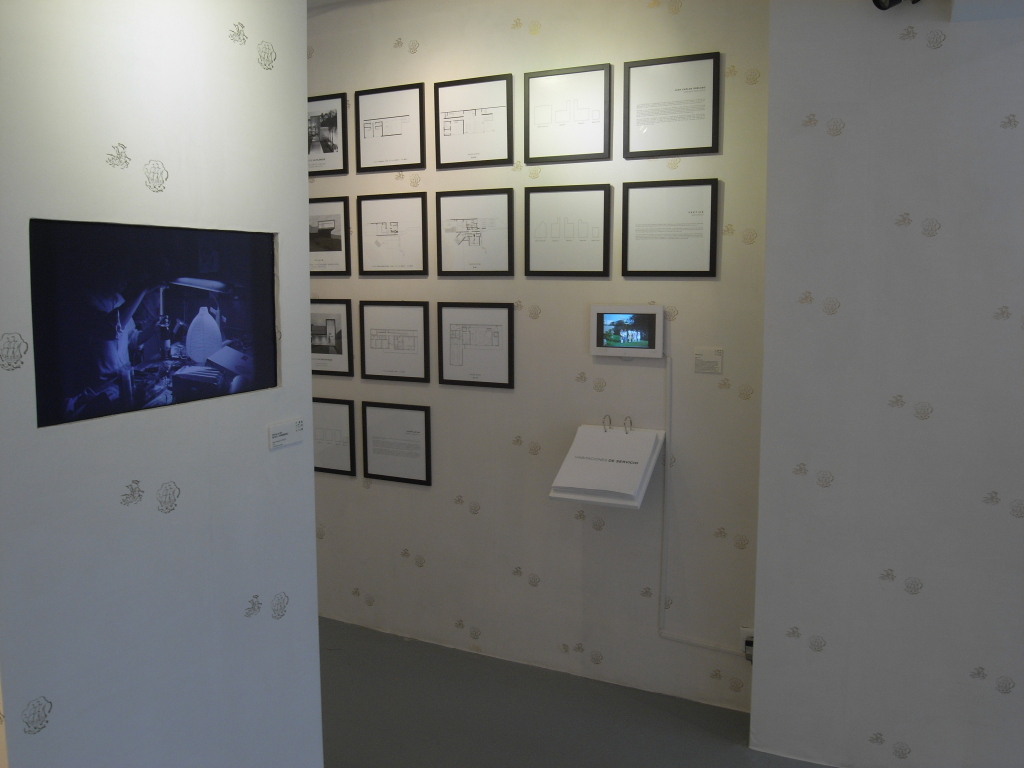1 March – 20 April 2014, Para Site, 4 Po Yan Street, Sheung Wan, Hong Kong
Para Site is one of the longest-standing art spaces in Hong Kong and as such it does not need much introduction. I have written about Para Site previously and most recently I was slightly complaining about the well made yet over-prominent and not-changing exhibition architecture. To my big relief, the space has been cleared up. Upon entering, the visitor felt like entering someone’s medium-sized living room. Artworks were distributed evenly on walls and in wall niches, a mix of different media, ranging from prints to video, rounded up with one three-dimensional, one sound-based and one text-based work. What made the exhibition look so living-room-like was a printed wallpaper – actually one of the artworks. The living-room like feeling was not a coincidence given the theme of the show.
The show titled “Golden Heights Estate” has been guest-curated by the What, How and for Whom (WHW) curatorial collective from Zagreb, Croatia. The overarching topic of the exhibition was middle class housing, mainly in the growing middle-class countries, i.e. the developed and developing Asia, Middle East and South America. The topic resonates well with Hong Kong, where real estate is always a very hot topic. The show did touch on the local situation, but it also extended beyond it, drawing works from South America and the Middle East.
Out of the works on show, I most enjoyed photo and paper-based works: The globe sculptures featuring a collage of newspaper cutouts by Mulugeta Kassa, Daniela Ortiz’ Maids Rooms directing attention to the size of maids rooms in South American upper class villas or Map Office’s Homes for China (a remake of Dan Graham’s Homes for America). I also very much enjoyed Kayfa ta & Haytham El-Wardany’s text work How to Disappear – a small neat booklet which visitors could take home with themselves, which made for a nice extension of the exhibition beyond the exhibition space itself. This presentation format was also very appropriate given the fact that the booklet contained sets of instructions of how to behave in public space. On the other hand the installation of videos seemed always a challenge in the relatively limited space at Para Site, and once again the wish to show more than less overcame any other considerations. Except for one video played on a monitor with headphones in front of an armchair I was not able to fully enjoy any of the other time-based works.
On the whole, I found the exhibition consistent and well researched. It also linked well into the overall Para Site dramaturgy: I saw a link to the floating cemetery concept of the “Floating Eternity” exhibition as well as a counter-balance relationship with the historically-focused “Great Crescent” exhibition. Para Site is always worth a visit, and this show was just as another confirmation of this fact. Maybe I will even return and give a second try to the videos.

View of the exhibition space with works by Iman Issa, Anton Kannemeyer, Mulugeta Kassa, Morin & Rouch and Map Office (L to R). Wallpaper by Runo Lagomarsino.

View of the exhibition space – works by Kwan Sheung Chi (L) and Daniela Ortiz (R). Wallpaper by Runo Lagomarsino.